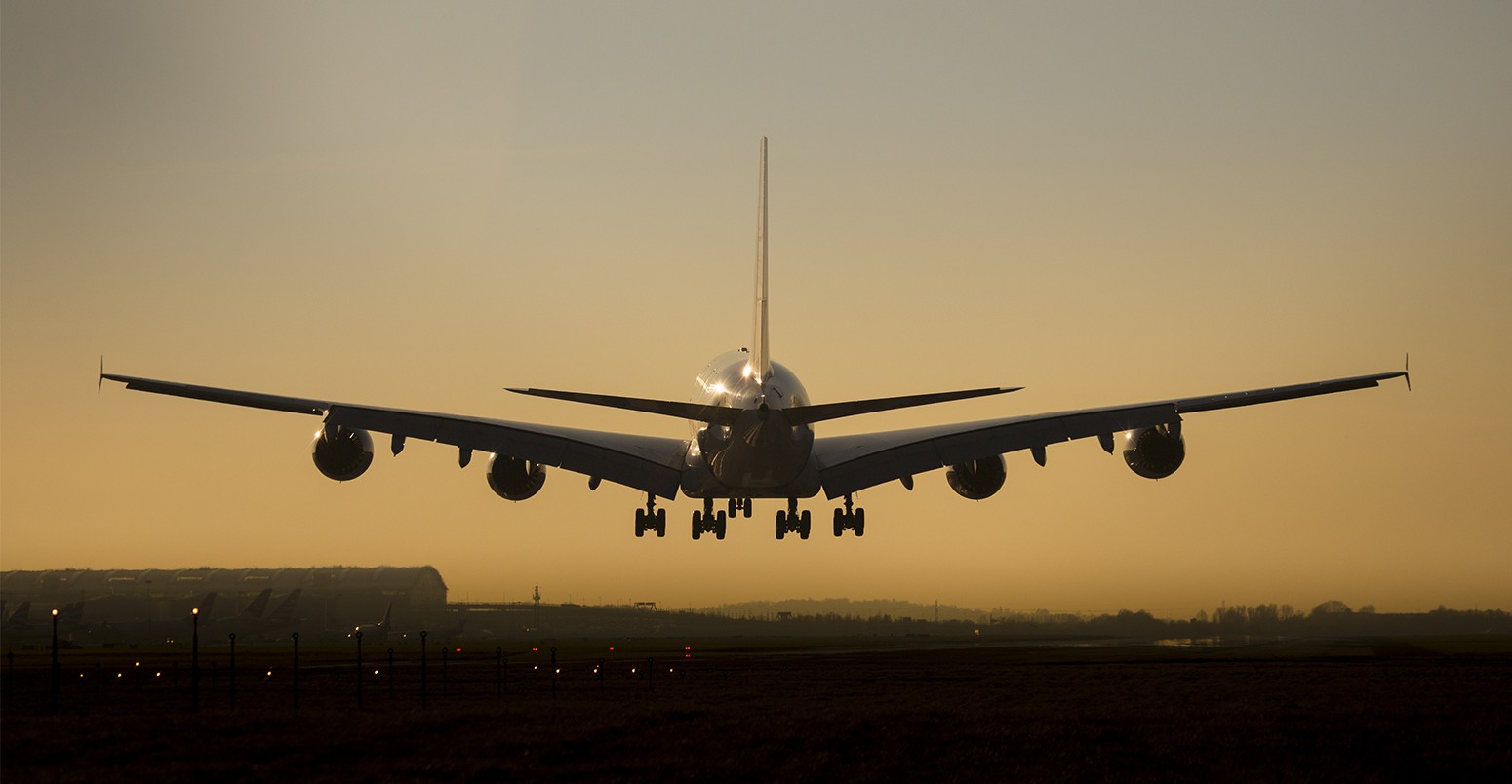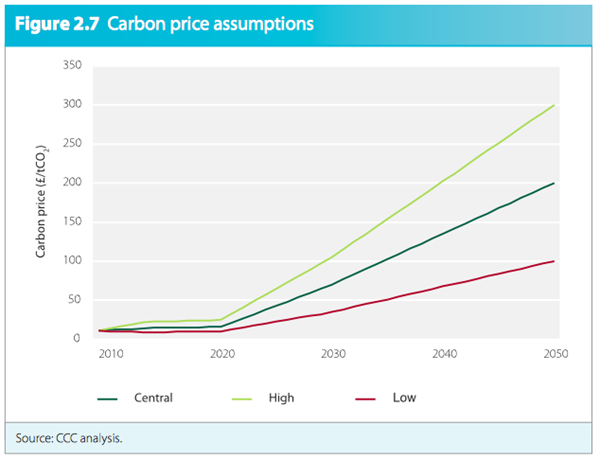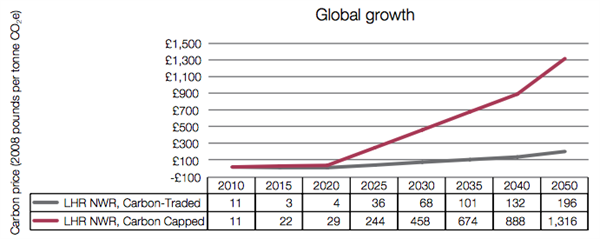
Raise carbon price to address aviation emissions, says Airports Commission
Sophie Yeo
07.01.15Sophie Yeo
01.07.2015 | 2:45pmThe Airports Commission has recommended a third runway at Heathrow, advising that this is the best way to expand the UK’s aviation sector.
While some, such as Chancellor George Osborne, have focused on the boost that airport expansion could bring to the UK’s economy, others have expressed doubt over whether the UK can simultaneously cater for increased demand for flights and hit its legally binding emissions targets.
The Committee on Climate Change (CCC) has recommended that, in order for the UK to cut its emissions 80% by 2050, emissions from aviation must be limited to 2005 levels. At this time, the sector emitted 37.5 million tonnes of carbon dioxide.
In February 2013, CCC chairman Lord Deben wrote to Howard Davies, the head of the commission, to highlight the limitations imposed on the aviation industry by the need to constrain its carbon emissions.
Davies has attempted to alleviate Deben’s climate concerns in a letter published today alongside the final commission report.
An exchange of views
Research by the commission in preparation for the report reveals the difficulties of expanding the UK’s airport capacity and staying within the 37.5MtCO2 cap.
A new runway at either Heathrow and Gatwick would push the UK’s aviation sector beyond this limit – although Heathrow expansion would do so by a wider margin. Carbon Brief has already explained the consequences in detail.
In his letter to Davies, Deben wrote:
“Aviation emissions at 2005 levels could be achieved with fuel and operational efficiency improvements, use of sustainable biofuels and by limiting demand growth to around 60% by 2050 compared to 2005.”
But limiting growth to 60% is easier said than done. The CCC says that the number of passengers travelling by aeroplane could grow by more than 200% if airport expansion is unconstrained and there is no attempt to put a price on carbon.
With some constraints and a carbon price of £200 per tonne of CO2 by 2050, growth in demand could be limited to 115% says the CCC – but this is still almost double its target.
Tackling rising emissions
Davies provides two potential solutions to the problem in his letter to Lord Deben, outlining the approach that he took in his report.
One approach is allow growth to continue unconstrained, but to trade the excess carbon on the EU carbon market up to 2030, and on a (currently non-existent) international carbon market subsequently.
The other option is to hike the carbon price. Davies writes:
“For the Gatwick option, the changes required are modest, an increase in the carbon price (to around £330 per tonne in 2050) and a level of biofuels usage below the CCC baseline are sufficient to constrain emissions to 37.5MtCO2. For the two Heathrow schemes, a more significant package of measures would be needed, for example including the same carbon price and significantly higher biofuels usage, plus a range of operational efficiency improvements.”
This helps to answer an important question about how airport expansion could happen while hitting the UK’s climate targets. Davies proposes raising the price of carbon to such an extent that the cost of an aeroplane ticket becomes prohibitively high, thus limiting demand for flights.
But the suggestion also leaves many questions unanswered. For instance, it is not clear whether the £330 price tag applies to a tonne of carbon, or to a tonne of carbon dioxide – an important nuance which would affect the price by a factor of almost four.
However, it seems likely that Davies is referring to carbon dioxide, where the £330 figure more closely matches modelling by the CCC, which came up with a potential range of £100-£300 per tonne of CO2.
Source: CCC, Meeting the UK aviation target – options for reducing emissions to 2050
It also fails to answer the question of whether the £330 per tonne of CO2 would apply to aviation alone, or to the whole economy.
Currently, power plants in the UK have to pay £18 to emit a tonne of CO2, plus around an additional â?¬6 as a result of the EU emissions trading system.
While a carbon price applied specifically to the aviation sector would likely drive improvements, it makes more sense from the perspective to economic efficiency to apply the charge across the whole economy, Cambridge economist Chris Hope tells Carbon Brief:
“If you have very different carbon prices across different sectors of the economy, then you are probably paying a lot more for your CO2 reductions than you would do if you had the same sort of carbon price across the whole of the economy.”
Can such a cost be justified? Hope adds that the leap in price is roughly in line with the figure that models are suggesting could be an appropriate cost for carbon by mid-century. He says:
“It looks from the work we’ve been doing that you could today quite easily justify a price of £80 to £100 per tonne of carbon dioxide because that seems to be about the extra damage that’s being caused today. And we also know the price should go up at about 2 to 3% a year in real terms as economies and people get richer and as we get closer and closer to when the nastiest effects of climate change are going to start.”
Appetite for change
Whether there is the political appetite for such a carbon price is another matter.
Chancellor George Osborne already announced that he would freeze the UK’s top-up tax at £18 in the 2014 budget, and passengers are unlikely to look smilingly upon the additional £500 they would have to pay for a return flight from London to New York.
Plus, Davies has left it unclear in his letter to Lord Deben exactly how the balance between the carbon price, biofuels, and operation improvements would play out in the case of Heathrow expansion, though he says the package would need to more “more significant” than the measures required at Gatwick.
Davies says that abiding by the UK’s climate targets while expanding Heathrow could require “significantly higher biofuels usage” than would be necessary at Gatwick. But the potential for this is limited. According to the Department for Transport:
“It is assumed that biofuels will account for 2.5% of fuel use on flights using UK airports by 2050 in the central forecasts.”
And Davies has not included some alternative figures from 2014 modelling by the Airports Commission.
These suggest that, under a scenario where demand for aviation grows across all regions of the world, a carbon price of £1,316 per tonne of CO2 equivalent will be required by 2050 in order to keep aviation within its 37.5MtCO2 boundary.
Source: Airports Commission, Strategic Fit: Forecasts
Today’s Airports Commission report may have resolved the question of whether a runway is more likely to be built at Heathrow or Gatwick, but questions remain over whether Davies has produced a realistic solution to the emissions conundrum.
It is for the government to decide whether it will go ahead with a third runway at Heathrow. Going ahead with construction means that the number of people flying in 2050 will rise. If this demand is managed through an additional carbon price, they could be paying a lot more for their holidays.
Main image: Aircraft landing at Heathrow.
-
The Airports Commission has recommended a third runway at Heathrow, advising that this is the best way to expand the UK's aviation sector
-
Raise carbon price to address aviation emissions, says Airports Commission



